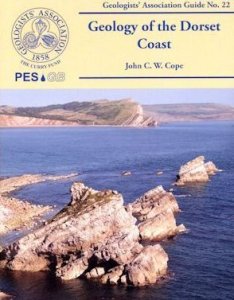The beach at St. Oswald’s Bay lies just to the east of Durdle Door, where an impressive coastal section display a range of rocks from the Jurassic to Cretaceous eras. Fossils to be found include echinoids, ammonites, brachiopods and bivalves, as well as shark teeth. It’s a lovely summer location, albeit busy but certainly more fruitful for fossils during the winter months, after some erosion.
DIRECTIONS
♦ The beach is best accessed by parking at Lulworth Cove and then walking west, for less than a mile towards Durdle Door.
♦ Walk from Lulworth up the short, hilly road, past Stair Hole and the red brick houses. At the end of the tarmac, an easy footpath leads to some muddy steps, near an old landslide and from here down onto the beach.
PROFILE INFO
FIND FREQUENCY: ♦♦♦ A good selection of fossils can be collected, from the Cretaceous Upper Greensand Formation and Chalk Group.
CHILDREN: ♦♦♦ Older children will enjoy the location but younger children might find the walk to the site and the steps to the beach rather challenging.
ACCESS: ♦♦♦♦♦ Access is very easy, with parking at the large car park at Lulworth Cove.
TYPE: – Fossils are found mostly in the small section of Upper Greensand cliff leading down to beach level and in the western section of the bay, at Man O’War Cove, where the Upper Greensand is overlain by Chalk. Fossils from both rock types occur.
FOSSIL HUNTING
Fossil collection requires careful extraction of specimens. The Upper Greensand Formation is comprised of dark green, glauconitic silts, with harder beds in places The rock is fossiliferous and echinoids, bivalves (especially Aequipecten aspera), brachiopods, worm casts and ammonites can be found.Ammonites, including the coiled heteromorph, Oitingoceras occur here. Teeth of the hybodont shark, Ptychodus, and the deepwater shark, Scapanorhynchus, also appear here.
Other ammonites can also be found including Schloenbachia, Calycoceras and Mantelliceras, from the Cenomanian Basement Bed of the Chalk Group. This bed is a glauconitic limestone, with phosphatised pellets, which weather proud of the rock. Examine these carefully for rolled ammonites and other fossils. Again, heteromorph ammonites are found here, including Scaphites and Turrilites.
Immediately above is the Grey Chalk Subgroup, followed by the White Group Subgroup. Echinoid fossils are common, especially Micraster coranguinum, Echinocorys and Conulus.
GEOLOGY

 Upper Greensand
Upper Greensand
SAFETY
The site is perfectly safe but be aware of incoming or rough tides, particularly during the winter months. Be aware also of any potential slippages on the cliff.
EQUIPMENT
Fossils will need to be prised from the matrix of both the Upper Greensand and the Chalk. Leave sufficient matrix around the fossil, to enable finer preparation at home.
ACCESS RIGHTS
This site is an SSSI and forms part of the UNESCO World Heritage Jurassic Coast. This means you can visit the site, but hammering the bedrock is not permitted. For full information about the reasons for the status of the site and restrictions please download the PDF from Natural England – SSSI Information – South Dorset
It is important to follow our ‘Code of Conduct’ when collecting fossils or visiting any site. Please also read our ‘Terms and Conditions‘
LINKS
♦ Buy Fossils, Crystals, Tools
♦ Location Discussions
♦ Deposits Magazine
♦ Join Fossil Hunts
♦ UK Fossils Network
-
Geology of the Dorset Coast (Geologists’ Association Guide No. 22.)
Original price was: £14.00.£11.20Current price is: £11.20.























